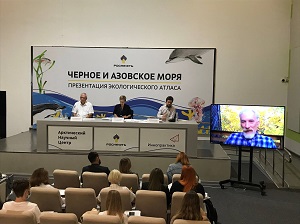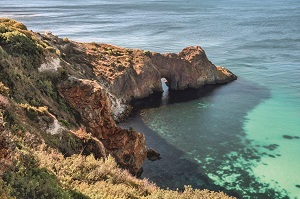Rosneft held a presentation of a unique ecological atlas of the Black and Azov Seas at the Sirius educational center

Rosneft presented a unique ecological atlas of the Black and Azov Seas at the Sirius Educational Center in Sochi. This is the fourth book in the Russian Ecological Atlases of the Seas series of scientific publications, which Rosneft is working on together with the non-governmental development institute Innopraktika.
The Atlas consists of six thematic chapters and is a scientific publication on physical geography, oceanology, hydrometeorology, ecology, economic potential, and research history of the Black and Azov Seas and their coastal areas.
 The publication describes in detail the changes occurring in recent decades associated with natural and anthropogenic factors, as it pays special attention to the state of ecosystems of the Black and Azov Seas. The Atlas presents valuable scientific data on the environment, including the result of Rosneft's many years of research of the sea in the licensed areas of the Company, as well as during a comprehensive project for the study of marine mammals of the Black Sea.
The publication describes in detail the changes occurring in recent decades associated with natural and anthropogenic factors, as it pays special attention to the state of ecosystems of the Black and Azov Seas. The Atlas presents valuable scientific data on the environment, including the result of Rosneft's many years of research of the sea in the licensed areas of the Company, as well as during a comprehensive project for the study of marine mammals of the Black Sea.
The involvement of the Black and Azov Seas in intensive economic activity inevitably leads to changes in the state of natural coastal and marine ecosystems. The information contained in this publication is therefore of particular value to the entire scientific community, as it enables an objective assessment of the degree of anthropogenic impact.
 The authoring team includes more than 40 experts in the field of geology, hydrology and biology of the seas, including 20 Candidates of Science and 8 Doctors of Science from leading universities and scientific organisations, as well as representatives of specially protected natural areas of the region.
The authoring team includes more than 40 experts in the field of geology, hydrology and biology of the seas, including 20 Candidates of Science and 8 Doctors of Science from leading universities and scientific organisations, as well as representatives of specially protected natural areas of the region.
During the event, Rosneft presented an atlas to schoolchildren and students of Sochi's educational institutions in preparation for the city's online festival on the occasion of International Black Sea Day. This will give more than 150 teams the opportunity to expand their knowledge of the environment and regional studies.
Rosneft, together with the P.P. Shirshov Institute of Oceanology of the Russian Academy of Sciences, the Centre for Marine Research at Lomonosov Moscow State University and Lektorium Publishing House, has developed and launched a unique free online course based on atlas materials. The course is designed for senior students of natural sciences universities.
Please download the Atlas free of charge here.
Note for Editors:
In 2019, Rosneft together with Innopraktika, a non-governmental development institute, published a unique atlas "Russian Arctic. Space, Time, Resources". The Atlas pays great attention to the natural environment and resources of the Arctic. It details history, culture, ethnography, economics, the social sphere, infrastructure and development prospects of the polar regions.
Rosneft and Innopraktika published the "Kara Sea", "Laptev Sea" and "Marine Mammals of the Russian Arctic and the Far East" ecological atlases as a part of the "Russian Arctic Sea Atlases" series. The series provides up-to-date knowledge in physical geography, oceanology, hydrometeorology, ecology, and marine mammals dispersal based on the fund data and the researching results of Rosneft Oil Company in 2012-2016 in the Arctic. The Environmental Sensitivity Index (ESI) system has been adapted for the marine bank typification sections.
Support for the project to study and monitor marine mammals of the Black Sea is part of Rosneft’s large-scale environmental programme. The project is implemented by the Institute of Oceanology of the Russian Academy of Sciences. In September 2018, the first sea expedition took place. Full-fledged studies of the dolphins' habitat have not been conducted since the 80s of the last century. Currently, two full-scale maritime expeditions have been organized along the entire coast of the Krasnodar Territory, each with a length of about 1,000 km, as well as airborne registration on a 700 km route along the Black Sea from Anapa to Adler. Scientists have studied more than 2,000 individuals of dolphins and collected extensive scientific material to complete photo and acoustic catalogues of the Black Sea cetaceans living in the area. In addition, shore-based studies were carried out, samples were taken for study in specialized laboratories.
Rosneft
Information Division
October 13, 2020